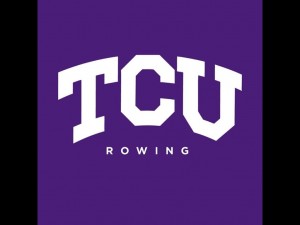SAFETY IS OUR TOP PRIORITY: Rowers as part of the FWRC and required to follow of of FWRC Safety Policies linked here. https://www.fortworthrowing.org/rowing-safety.html The TCU Head Coach has final authority on Safety related matters directly relating to matters pertaining to TCU. However, if ANY of our coaches is uncomfortable with a situation, a more conservative approach should be taken. (You should also make sure that student rowers safety concerns are addressed).
Rules to follow:
Here are some clarifications to the rules from FWRC site:
1- Dark Rowing: If rowing a boat without a cox, students must not be on the water more than 30 minutes prior to officer sunrise, and be off the water 30 minutes after official sunset. Crew/coxed boats can row in the dark, however all boats will have the required boat lighting, if able the coach boat will be utilized. If a student or student crew is an experienced varsity rower/crew (currently competing in the specific boat 2X, 2- or 1X) they may practice if accompanied by an experienced coach. Each varsity student blind boat crew, should have a designated coach during dark rowing.
2- Water Levels at Beach St: There should be NO ROWING east of Beach St when the water is flowing over the dam. No rowing should take place when Gage Height reading is above 16.5 or current is great than 1,000 CFPS. For varsity TCU crews only in crew boats 4+ or 4X they may row above the limits posted on FWRC. (These special limited will be assessed and updated based on actual observed conditions). It’s important to be aware of changing conditions. Only go out above the standard limits, once enough time has past following a rain event, the the water level is at a “consistent safe level”, it’s day time and the river is safe from additional debris, crew may row based on the judgment of an experienced coach.
Guild Lines for Rowing. Good judgment and a conservative approach to safety is always the best policy.
1- Weather: always check the forecast. Even though it may look “nice”, storms can pop up quickly. Please read the “What If” Weather Scenario at the bottom of this page as a guild to help select the correct location and type of practice. There are many great weather App that you can take conditions. Weather Channel App: Has forecast winds, as well as a forecast radar tracker. Following a heavy rainfall, the Beach St. water level can raise a fair amount. If water is either over the ramp/dam (16 feet) it is not recommended for novices to row or to row in the dark. MCL would be the better option. Here is the water data for Beach St. https://waterdata.usgs.gov/usa/nwis/uv?08048543
2- Winds: High winds can produce waves and make docking difficult, especially in 1X. Beach St. is more protected the Marine Creek Lake. Wind direction is also an important factor. Coaches will make the call if it’s safe to row and specifically where rowing will take place.
Recommend Wind parameter: MCL: Maximum Winds are 15mph. Beach St.: Maximum Winds are 20mph. The wind values include the gust factor. These winds are for crew boats. 1X winds should be reduced by 5mph and even more depending on experience of rower.
3- Safety Officer (TCU) must be present at every practice. When out on the water, alway use the buddy system and never, row off on your own. Basic “Learn to Row” training must be focused on Safety first. Brief new rowers on safety protocols, getting out of a flipped boat and staying with the boat. Make sure the coach boat has required # of life jackets and mention the location of the first aid kit in the Boathouse/Container. Coach or coxswain should have quick access to a cell phone and know exact address if 911 emergency services are required.
4- Ditching and Life Jackets: All rowers rowing a 1X and who have not done Flip Training (not yet 1X Certified) shall wear a life jacket when rowing a single. TCU students rowing in a 1X will always be accompanied by a Coach and if training for a race can use the shell as their preserver (as per US Rowing Rules). If the rower is a new recreational sculler they should wear a life jacket. Ditching Training. The first water practice will include what to do in the unlikely even a crew boat flips (ditches). Rowers must always stay with the rowing shell which are designed to float and act as a life preserver. When in a crew boat, 4+ and 8+ no life jackets are required.
5- Coaches required at water practices. A FWRC coach is required to be in attendance at all water practices. The number of FWRC coaches required at each water practice is determined by the number/type of boats. Coaches will determine who is qualified to row in which boats, as well as to take into account factor such as air and water temperatures, to ensure for the safety of the students. An acceptation to this rule is when an experienced crew with an experienced cox has been clear for a specific practice by a coach after weather & water levels have been checked.
6- – Traffic Pattern and Lookout. At Beach St keep your starboard side (green) closest to shore. Always take a look behind you before you start rowing and every 5 or 6 strokes, especially at Marines Creek Lake with so many fishing boats. Coxswains & bow-seats need to be mindful of watching for Swimmers along the east shore of MCL, especially on Saturday mornings.
7. Scheduling Water Practices: Each water practice must have the appropriate number of FWRC coaches, as well as an adequate level of crew experience for the specific rowing location/boat. The “Practice Coordinators”: FWRC Lead M/W Coaches: (Sam/Ashley) as well as the Student M/W Coaches: (Willie and Sovereign), will create the water practice schedule, prior to the start of each rowing week (Ideally approved and posted by Saturday evening.).
Early posting of the water practice schedule will give Crew Captains time to ensure practice logistics and substituted are in place for the week. Practice Coordinator will:
- Deconflict TCU water practices with any FWRC & TRWD events and select the most appropriate practice location.
- Ensure the adequate Level of coaches (TCU & FWRC) are available for the crews rowing.
- Create a weekly master practice spread sheet (Water/ERG). Ensure that all water practices are on the google Practice sheets well in advance of the practice, as well as on appropriate Group Me. This will give awareness to other crews that you will be out on the water and give “automatic” notice of a schedule change.
8. Scheduling Regatta Events: The Head Coach will provide the deadline for specific Regatta event selection, to be made based upon crew/cox availability. Shortly there after the actual boats lineups will be submitted by the Men/Women lead coaches. The final “agreed upon” Regatta Events, as well as the specific Crew lineups will then be sent out to the Team.
🚣🏿♂️🚣🏿♂️🚣🏿♂️🚣🏿♂️🚣🏿♂️🚣🏿♂️🚣🏿♂️🚣🏿♂️
TCU Coaching Structure:
TCU utilizes the experience of the Fort Worth Rowing Club (FWRC) Coaches, who have decades of coaching experience. All water operations and coaching training is overseen by the “Head Coach”, who delegates oversight the other FWRC Coaches. Currently these coaches are Sam, Ashley, Julia and Austin, one of which will be in attendance of all water practices. As a Coach, no matter your coaching level, the safety of your rowers always overrides all other factors. Accidents occur so we need to always try mitigate unnecessary “risk factors”.
US Rowing Certification: Coaches are encouraged to do the US Rowing Level 2 Course certification .
Level 2. Certificate.
Level 1: US Rowing Coaches Course: https://usrowing.org/sports/2020/11/9/level-1-course-description.aspx?id=1119
Additional Training Information.
Training Videos: https://www.fortworthrowing.org/training.html. (Use door Door Code)
Decent Rowing Log in: https://www.decentrowing.com
Login: fortworthrowingclub@gmail.com
Password: rowtoday
People don’t plan to fail, they fail to plan:
“What If” Weather Scenario:
Plan for “WHAT IF” contingencies and have an adaptation plan for you practice. Below is a typical plan for a practice, with examples of “adverse situations” that you may encounter. We laid out how to adapt your practice plan and still make the most it. Keeping the crews positive and motivated during these adverse situations is a key factor for your
Which Location: MCL or Beach St.?
– 8+ are only located at MCL (also currently at MCL is 4+, 4X, 1X), so you decide to row at MCL it make use of the 8+ and you have an experienced Cox with this novice crew. You have a great crew lineup, a list of exercises that you have already briefed the Cox on, and you will be coaching from the coach boat.
Check the weather?
– That morning you look at the weather and notice that the winds for the evening practice will be above 15MPH.
– So you correctly decide to move practice to Beach St. which is much more protected from the winds. You give everyone lots of notice about the change of plans and that they have rides. (Attention to detail is key).
– You arrive at Beach St with a new plan to use two 4+, with you now Coxing the second 4+ boat. You check the weather and the radar now shows that Thunderstorms (with lightning) are forming to the southwest and moving toward Fort Worth.
– You consider waiting out the storm, as it will pass fairly quickly, however you will run out of daylight, which rowing with this novice crew is not an option.
You correctly decide to move to an ERG Workout in shifts. You still get in a great workout and kept safety as a top priority!!!
Chances are that most days will go as plan. However, as an Advanced “Water Practice” Coach it’s your responsibility to make the safest choice. I encourage you all to attend as many practices as you can, ask lots of “what if” questions and become comfortable with making these important practice decisions.
Row Safe!
Row Frogs!

